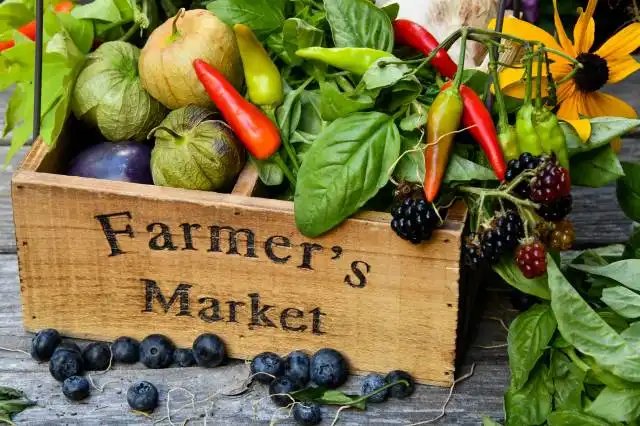Start a Pumpkin Farm
Enchanting the World with Your Own Pumpkin Wonderland
| Updated


PUMPKIN FARM
Welcome to the charming world of pumpkin farming, all you budding entrepreneurs! Running a pumpkin farm isn't simply about growing those vibrant, round spheres. It entails creating a whole autumnal experience with pumpkin patches ripe for family-friendly picking, carving contests, and trendy pumpkin-spiced products. This business cultivates and sells varieties of pumpkins to consumers and businesses, with an added flair of seasonal festivities to keep your customers enchanted.
Jump to Business Plan
RELATED BUSINESS IDEAS
Browse ALL Food & Beverage Entrepreneurship Business Ideas
Discover Your Perfect Domain
Unlock the door to your online success with our hand-picked selection of premium domain names. Whether you're starting a new venture or rebranding an existing one, the right domain can set the tone for your digital presence. Browse through our curated list, each with its unique potential to enhance your brand's visibility and credibility.
PUMPKIN FARM MINI BUSINESS PLAN
This a quick reality check to help you identify the strengths and weaknesses of your business concept before you dive in.
Business Idea: Pumpkin Farm
Expected Percent Margin:
- Gross Margin: 50-60%
- Net Profit Margin: 20-30%
Earnings Expectations:
- Daily Earnings: $150 - $300 (varies greatly by season)
- Weekly Earnings: $1,050 - $2,100
- Monthly Earnings: $4,500 - $9,000
- Annual Earnings: $54,000 - $108,000 (heavily weighted towards fall months)
Actions to Hit Those Numbers:
Pumpkin Cultivation:
- Land: At least 2-3 acres to start, with quality soil and irrigation system.
- Seeds: Purchase high-yield, disease-resistant pumpkin seeds.
- Seasonal Labor: Hire seasonal field workers for planting and harvesting.
Marketing and Customer Acquisition:
- Seasonal Attractions: Host events like pumpkin-carving contests, hay rides, and corn mazes.
- Local Advertising: Connect with local schools, churches, and community groups to promote your farm.
Sales:
- Retail/Wholesale Pricing: Diversify your revenue streams. Sell small pumpkins for home decor, larger ones for carving, and bulk sales to local grocery stores.
- Value-added Products: Consider producing and selling pumpkin-based products like pies, jam, and seeds.
Cost Control:
- Fertilizer and Pest Control: Implement an effective and budget-friendly pest management system.
- Irrigation: Make sure your water sources are reliable to maintain crop health.
Business Operations:
- Planting and Harvesting: Familiarize yourself with the specific growing needs of pumpkins to ensure a bountiful harvest.
- Weather Consideration: Monitor weather conditions closely. Frost, pests, or disease can drastically reduce yield.
These are broad estimates and can evolve greatly depending on location, market conditions, and individual business strategies. Getting in touch with an agronomist or agriculture extension service could provide more personalized guidance.
NOT WHAT YOU HAD IN MIND? Here are more ideas



Browse ALL Food & Beverage Entrepreneurship Business Ideas
Grab Your Business Website Name
Before you get caught up in the whirlwind of setting up your business, invest in a domain name. It's a small but significant step that lays the foundation for your brand and makes it easier for customers to find and trust you. Just like you wouldn't build a house without securing the land first, don't build a business without securing your domain name.
"Why? Can't that wait?" Here's why it shouldn't
Step 1: Determine if Starting a Pumpkin Farm is Right for You
Breakdown of Startup Expenses
When starting a pumpkin farm, it is important to understand the startup costs associated with the business. These costs can include the purchase of land, seeds, equipment, and supplies. Additionally, you will need to consider the cost of labor and any other costs associated with the business. It is important to have a clear understanding of the startup costs to ensure that you have the necessary funds to get the business off the ground.
Breakdown of Ongoing Expenses
In addition to the startup costs, there are ongoing expenses that need to be taken into consideration when starting a pumpkin farm. These expenses can include the cost of labor, supplies, and equipment. Additionally, you will need to consider the cost of marketing and advertising to ensure that your business is reaching the right audience. It is important to understand the ongoing expenses associated with the business to ensure that you are able to sustain the business in the long-term.
Examples of Ways to Make Money
When starting a pumpkin farm, it is important to understand the different ways that you can make money. One way to make money is to sell the pumpkins directly to customers. Additionally, you can sell the pumpkins to local grocery stores and restaurants. You can also sell the pumpkins to local farmers markets and festivals. Additionally, you can offer pick-your-own pumpkin patches and hayrides to customers. Understanding the different ways to make money from a pumpkin farm is essential to ensure that the business is profitable.
Step 2: Name the Business
Naming a business is an important step in the process of starting a pumpkin farm. It is important to choose a name that is memorable and easy to spell. It should also reflect the type of business and the values of the business. Additionally, it is important to check that the name is not already taken by another business. This can be done by checking with the local business bureau and the United States Patent and Trademark Office.
It is also important to consider the domain name for the business. If the business will have a website, the domain name should be easy to remember and spell. It should also be available for purchase. Additionally, the domain name should be available on all of the major social media sites. This will help to ensure that customers can easily find the business online.
Finally, it is important to consider how the name of the business will look on promotional materials. The name should be easy to read and should look good on business cards, flyers, and other promotional materials. This will help to ensure that customers can easily recognize the business.
Step 3: Obtain the Necessary Licenses and Permits
Once you have determined that starting a pumpkin farm is the right business endeavor for you, the next step is to obtain the necessary licenses and permits. Depending on the type of business you are running, you may need to obtain a business license, a tax ID number, and other permits. It is important to research the requirements in your area, as they can vary from state to state. Additionally, you may need to obtain a zoning permit if you are planning to operate your business from your home. You may also need to obtain a permit to use any chemicals or fertilizers on your land. Finally, you may need to obtain a permit to sell your pumpkins at a farmers market or roadside stand. All of these permits and licenses can be obtained from your local government offices.
Step 4: Find Land and Resources
The fourth step in starting a pumpkin farm is to find land and resources. This includes researching the local zoning laws and regulations, as well as finding a suitable piece of land that is suitable for growing pumpkins. It is important to consider the size of the land, the type of soil, the amount of sunlight, and the amount of water available. Additionally, it is important to consider the access to resources such as fertilizer, pesticides, and other necessary materials. It is also important to consider the cost of the land and the resources needed to maintain it. Once the land and resources have been identified, it is important to make sure that the land is properly zoned for agricultural use and that the resources are available. Additionally, it is important to consider the cost of leasing or purchasing the land and resources, as well as the cost of any necessary permits or licenses. Finally, it is important to consider the cost of any necessary equipment or tools that may be needed to maintain the land and resources.
Step 5: Prepare the Land
Preparing the land for a pumpkin farm is a critical step in the process. The land should be cleared of any debris and weeds, and the soil should be tested to ensure it is suitable for growing pumpkins. Depending on the size of the farm, it may be necessary to rent or purchase additional land. It is also important to consider the climate and weather patterns of the area, as pumpkins require a certain amount of sunlight and water to grow. Additionally, it may be necessary to install irrigation systems, fencing, and other equipment to ensure the pumpkins are properly cared for. Finally, it is important to consider the type of pumpkins that will be grown and the amount of space needed to accommodate them.
Step 6: Plant the Seeds
After the soil has been prepared, it is time to plant the seeds. Pumpkin seeds should be planted in hills, with four to six seeds per hill. The hills should be spaced at least three feet apart. The seeds should be planted about an inch deep and lightly covered with soil. The soil should be kept moist during the germination process. After the seeds have germinated, thin the plants to two or three per hill. This will ensure that the plants have enough room to grow. Pumpkins need plenty of sun and water to grow, so make sure to water the plants regularly and keep them in a sunny area. Additionally, fertilize the plants every two weeks with a balanced fertilizer. This will help the plants to grow healthy and strong.
Step 7: Market the Business
Marketing the business is essential to the success of a pumpkin farm. It is important to create a marketing plan that includes both online and offline strategies. Online strategies could include creating a website, utilizing social media, and creating an email list. Offline strategies could include attending local events and festivals, participating in farmers markets, and creating a presence in local stores. It is also important to create a brand identity for the business. This includes creating a logo, slogan, and overall look and feel for the business. Additionally, it is important to create a pricing strategy that is competitive and attractive to customers. Finally, it is important to create a customer loyalty program to reward customers for their repeat business.
Step 8: Harvest the Pumpkins
Harvesting the pumpkins is the most exciting part of the process. It is important to know when the pumpkins are ready to be harvested. The best way to tell is to look at the color of the pumpkin. If the pumpkin is a deep orange color, it is ready to be harvested. It is also important to check the stem of the pumpkin. If the stem is dry and brittle, the pumpkin is ready to be harvested. It is best to harvest the pumpkins in the morning when the temperature is cooler. This will help to keep the pumpkins fresh for a longer period of time.
Once the pumpkins are harvested, it is important to store them properly. Pumpkins should be stored in a cool, dry place, away from direct sunlight. This will help to keep the pumpkins fresh and prevent them from rotting. It is also important to inspect the pumpkins for any signs of damage or disease. If any pumpkins are found to be damaged, they should be discarded immediately.
The pumpkins can then be sold at local farmers markets, roadside stands, or directly to customers. It is important to price the pumpkins accordingly, taking into account the cost of production and the current market prices. Pumpkins can also be used to make a variety of products such as pumpkin pies, pumpkin bread, and pumpkin spice lattes. These products can be sold at farmers markets or roadside stands, or even online.
Finally, it is important to keep accurate records of all sales and expenses. This will help to track the success of the business and ensure that it is profitable. Keeping accurate records will also help to prepare for tax season and ensure that all taxes are paid on time.
Step 9: Sell the Pumpkins
The final step in starting a pumpkin farm is to sell the pumpkins. There are several ways to do this, including selling directly to customers, selling to local grocery stores, or selling to wholesalers. For those who are selling directly to customers, it is important to have a good marketing plan in place. This could include creating a website, setting up a booth at a local farmers market, or even advertising in local newspapers. For those selling to grocery stores, it is important to have a good relationship with the store and be able to provide a steady supply of pumpkins. For those selling to wholesalers, it is important to have a good understanding of the market and be able to provide a steady supply of pumpkins at a competitive price. Additionally, it is important to have a good understanding of the different types of pumpkins and the different uses for them. This will help ensure that the pumpkins are sold for the right price and that customers are satisfied with the product.
EXPLORE MORE CATEGORIES
Browse ALL Business Idea Categories
TAKE THE NEXT STEPS










